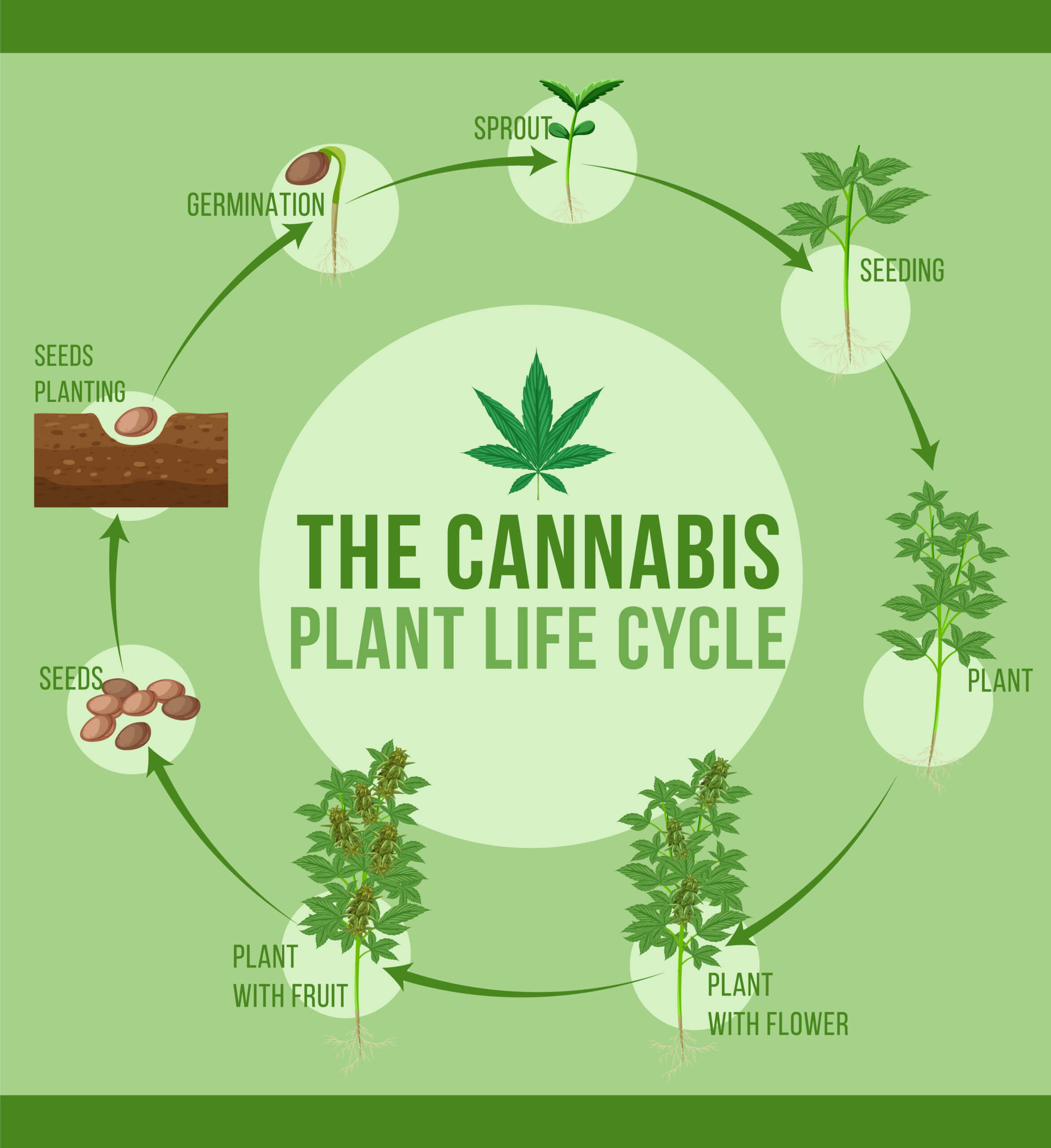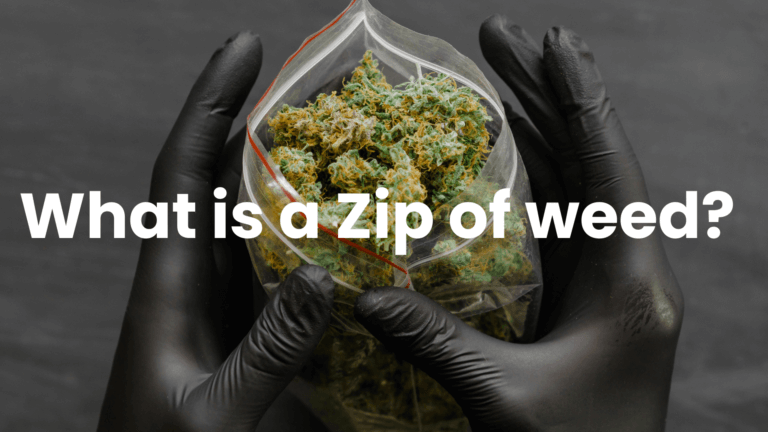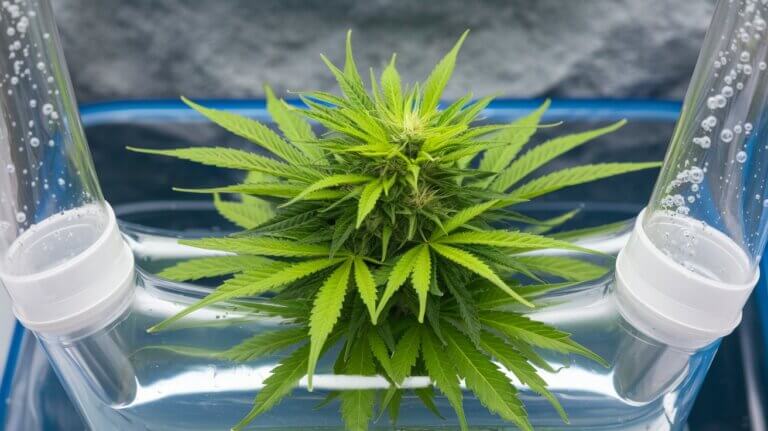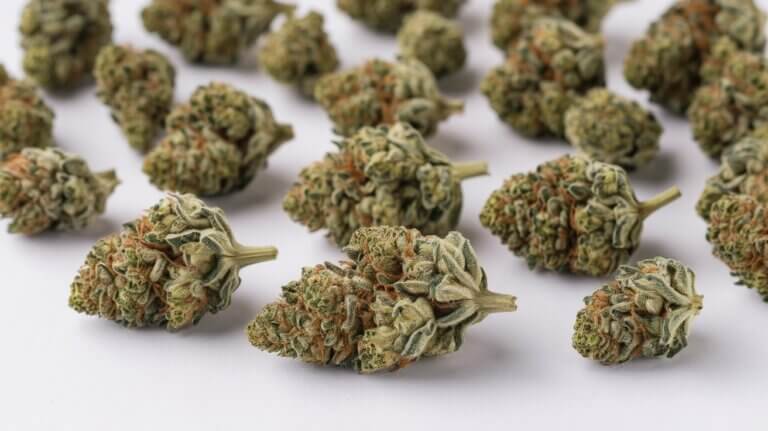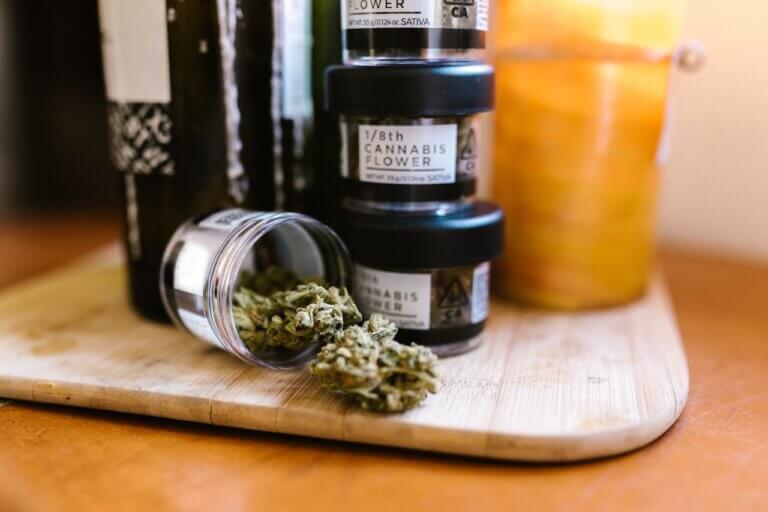Anatomy of a weed plant: the Secrets of Cannabis Growth
Introduction
The cannabis plant, often simply called weed, is a botanical marvel with a rich history of medicinal, recreational, and industrial use. While knowing the anatomy of a weed plant is essential for cultivators, enthusiasts, and anyone intrigued by its growth process. This guide dives into the structure of a cannabis plant, explaining the unique roles of each part and how they work together to produce the cannabinoids and terpenes we know and love.
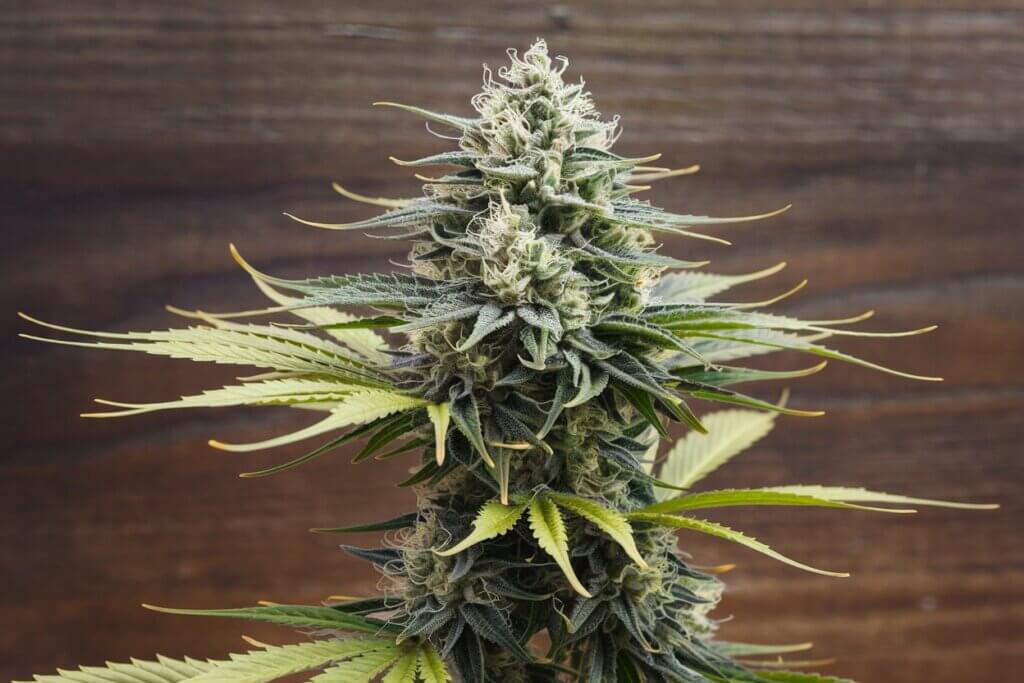
The Key Parts of a Weed Plant
To appreciate the anatomy of a cannabis plant, we’ll explore its primary parts: roots, stems, leaves, flowers, and seeds. Each part plays a vital role in its lifecycle and production quality and comprises the Anatomy of a weed plant.
Roots: The Foundation of Life
The roots are the lifeline of a cannabis plant, anchoring it in soil while absorbing water and nutrients. Healthy roots are vital for robust growth.
- Functions:
- Absorption of essential nutrients like nitrogen, phosphorus, and potassium.
- Stabilization of the plant to support upward growth.
- Prevention of diseases by ensuring proper nutrient uptake.
- Importance for Cultivators: Monitoring root health can prevent common issues like root rot and nutrient deficiencies. Cultivators often use well-aerated soil and hydroponic systems to promote healthy root growth.
Stems and Branches: The Backbone of Support
Stems are the main support system for a cannabis plant, connecting the roots to the leaves and flowers.
- Functions:
- Transporting water and nutrients from roots to other parts of the plant.
- Providing structural support for leaves and flowers.
- Acting as storage for essential compounds during growth.
- Growth Tips: Training techniques like Low-Stress Training (LST) or topping can manipulate stem growth to increase light exposure and improve yields.
Leaves: The Photosynthesis Powerhouse
Leaves are crucial for photosynthesis, the process by which plants convert light into energy.
- Types of Leaves:
- Fan Leaves: Large leaves that capture sunlight and regulate temperature.
- Sugar Leaves: Smaller leaves found around the flowers, often trimmed and used for extracts.
- Importance: Healthy, green leaves are indicators of a thriving plant. Discolored or curled leaves may signal nutrient imbalances or pest issues.
Flowers: The Treasure Trove of Cannabinoids
The flowers, often called buds, are the most prized part of the cannabis plant. They contain the highest concentration of cannabinoids like THC and CBD.
- Parts of the Flower:
- Calyxes: Tiny, teardrop-shaped structures that hold the pistils and trichomes.
- Pistils: Hair-like structures that collect pollen during fertilization.
- Trichomes: Crystal-like glands that produce cannabinoids and terpenes.
- Harvesting Insights: Timing the harvest when trichomes are at peak maturity can maximize potency and flavor.
Seeds: The Next Generation
Cannabis seeds are vital for reproduction and vary in size, color, and quality.
- Uses:
- Germination for growing new plants.
- Processing into hemp oil and other products.
- Collecting as part of a genetic preservation strategy.
- Germination Tips: A proper germination process includes maintaining moisture, warmth, and darkness to sprout healthy seedlings in the weed plant, while being in anatomy of a weed plant.
The Lifecycle of a Weed Plant
The anatomy of a cannabis plant is best understood within its lifecycle, which includes:
- Germination: Seeds sprout roots and begin growing stems and leaves.
- Seedling Stage: The plant develops its first true leaves.
- Vegetative Stage: Rapid growth of stems, branches, and fan leaves occurs.
- Flowering Stage: Buds develop, trichomes form, and cannabinoids are produced.
- Harvest: Mature buds are harvested, dried, and cured.
Common Challenges in Anatomy of a Weed plant
Cultivators often face challenges in optimizing their plants’ anatomy. These include:
- Nutrient Deficiencies: Visible through discoloration or stunted growth.
- Pests and Diseases: Spider mites, aphids, and powdery mildew can damage the plant.
- Light Stress: Overexposure or insufficient lighting can disrupt photosynthesis and flowering.
Addressing these issues promptly ensures healthy plant anatomy and maximized yields.
Humanizing the Weed Plant: More Than Just a Crop
The cannabis plant is more than a collection of roots, stems, and flowers. It has a profound cultural and therapeutic significance:
- Medicinal Uses: Cannabinoids like CBD provide relief for pain, anxiety, and seizures.
- Environmental Benefits: Cannabis cultivation can improve soil health and sequester carbon.
- Cultural Connections: From ancient rituals to modern advocacy, cannabis has played a role in connecting communities.
By understanding the anatomy of the plant, we can better appreciate its versatility and contributions to society.
FAQs
What is the most important part of a weed plant?
The flowers are the most important part for cultivators due to their cannabinoid content, but every part is vital for the plant’s survival.
How can I tell if my cannabis plant is healthy?
Healthy plants have vibrant green leaves, sturdy stems, and strong root systems. Look for signs like discoloration, drooping, or pests to catch issues early.
What are trichomes, and why are they important?
Trichomes are tiny, crystal-like glands on cannabis flowers that produce cannabinoids and terpenes, responsible for the plant’s potency and aroma.
How do I encourage bigger buds?
Optimize light exposure, ensure a balanced nutrient supply, and maintain a consistent watering schedule during the flowering stage.
What role do fan leaves play in cannabis growth?
Fan leaves are essential for photosynthesis, which provides energy for the plant to grow and produce buds.
Can I use every part of the cannabis plant?
Yes, nearly every part has a use: flowers for smoking, stems for fiber, leaves for extracts, and seeds for oil or planting.
Conclusion
The anatomy of a weed plant is a complex and fascinating topic that underscores the plant’s uniqueness. From its robust roots to its cannabinoid-rich flowers, each part plays an essential role in its lifecycle. Understanding these components not only helps cultivators maximize yields but also deepens our appreciation for this versatile and culturally significant plant. Whether you’re a grower or an enthusiast, learning about cannabis anatomy is a step toward unlocking its full potential.
